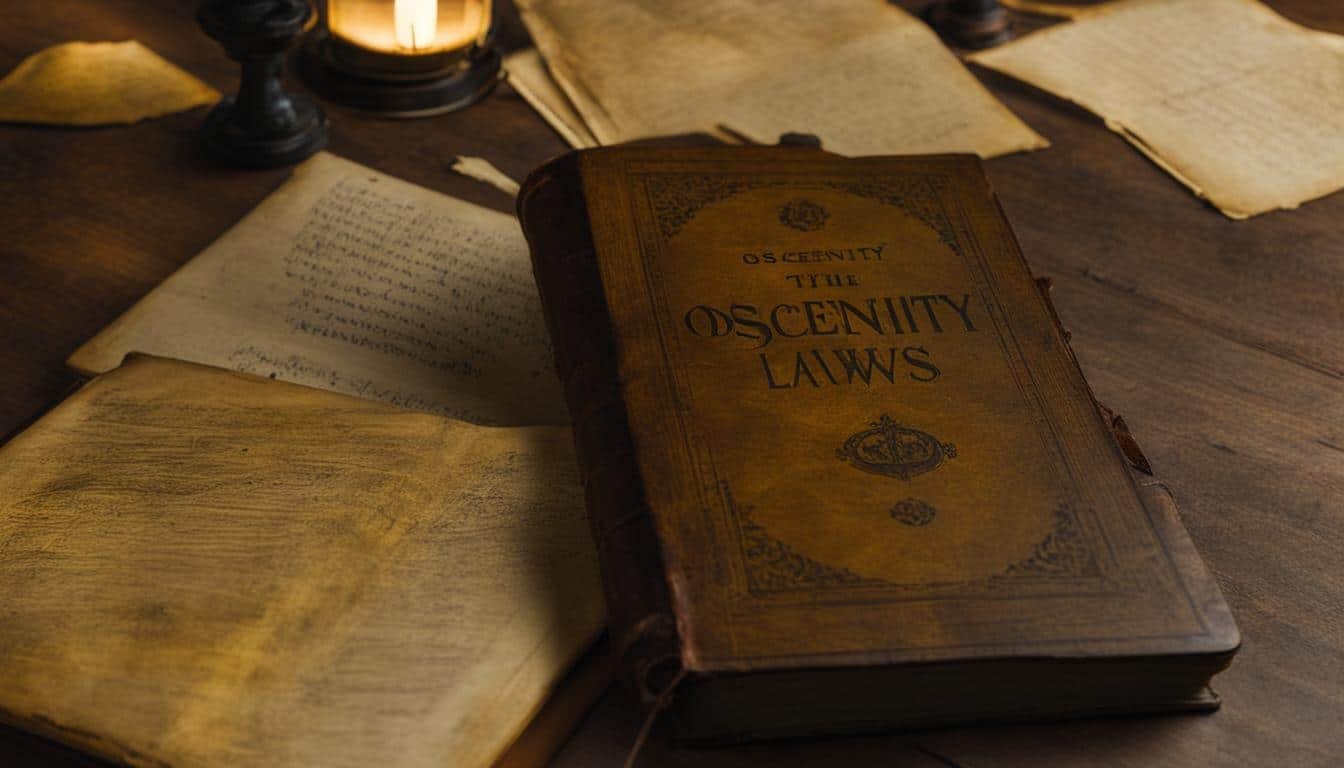Obscenity laws in the United States have undergone significant transformations over the years. From the mid-19th century, communities regulated their own behavior, and the first significant federal law came into effect with the 1873 Comstock Act, which prohibited the mailing of obscene material. However, the landmark U.S. Supreme Court case, Miller v. California, in 1973, established the “Miller test,” defining obscenity as material lacking serious literary, artistic, political, or scientific value and appealing to prurient interests. The history of obscenity laws in America reflects societal shifts, technological advancements, and changing attitudes towards sexuality.
Key Takeaways:
- The United States’ obscenity laws have evolved over time, reflecting societal changes and technological advancements.
- The 1873 Comstock Act was the first significant federal law regulating obscenity in the United States.
- The landmark case of Miller v. California in 1973 established the “Miller test” for defining obscenity.
- Obscenity laws in America have been shaped by shifting attitudes towards sexuality and the desire to balance freedom of expression with societal standards.
- The history of obscenity laws highlights the ongoing complexities and debates surrounding sexual expression.
The Influence of Media and Technology
Advancements in media and technology have had a profound impact on the evolution of obscenity laws. As new forms of media emerged, they pushed the boundaries of what was considered obscene and sparked debates about appropriate content. For example, during the early era of film, controversial short films like “Carmencita” (1894) and “The Kiss” (1896) shocked audiences with their intimate depictions. These films challenged societal norms and led to discussions about censorship.
Books have also faced legal challenges throughout history. James Joyce’s Ulysses, for instance, encountered legal obstacles, and the United States v. One Book Called Ulysses case in 1933 resulted in a ruling that allowed for the publication of the novel. This case demonstrated how the introduction of new forms of media, like books, could disrupt existing obscenity laws and lead to changes in censorship practices.
“The introduction of new media and technology often disrupts traditional conceptions of obscenity and prompts society to reassess its definitions.”
Technological advancements, such as the internet, have further complicated the issue of obscenity. With the rise of online platforms, individuals have gained greater access to explicit content, raising questions about how to regulate and protect against harmful material. The rapid pace of technological development also challenges lawmakers and courts to keep pace with changing modes of communication and expression.
The Influence of Media on Obscenity Laws
The influence of media and technology on obscenity laws cannot be understated. From film to literature to the internet, each new medium has disrupted traditional conceptions of obscenity and prompted society to reassess its definitions. As media and technology continue to evolve, so too will the debates and discussions surrounding appropriate content and the boundaries of expression.
Legal Definitions and Court Cases
The legal definitions of obscenity have been shaped through a series of court cases and Supreme Court rulings. These legal developments have played a crucial role in determining what is considered obscene and establishing guidelines for obscenity laws. One significant case that influenced the legal landscape is Miller v. California (1973), where the Supreme Court established a three-part test to determine obscenity. This test required that the material lacks serious value and appeals to prurient interests.
Another important case that helped shape the legal definitions of obscenity is Roth v. United States (1957). In this case, the Supreme Court introduced the “average person, applying contemporary community standards” standard, which aimed to determine obscenity based on societal norms. These court cases and rulings aimed to provide clearer guidelines for determining obscenity, taking into account both the artistic value of the material and the community standards.
“The Miller test and the ‘average person’ standard have played a significant role in defining obscenity in the United States. These legal definitions have evolved over time as society’s attitudes towards sexual expression have changed.” – Legal Expert
However, the definition of obscenity has faced challenges and added complexity through subsequent court cases. For example, Jacobellis v. Ohio (1964) introduced the concept of “redeeming social value,” which allowed certain material to be considered non-obscene if it had artistic, literary, or scientific value. Osborne v. Ohio (1990) expanded the definition further by including the possession of child pornography as obscene material.
| Landmark Court Cases on Obscenity Laws | Year |
|---|---|
| Miller v. California | 1973 |
| Roth v. United States | 1957 |
| Jacobellis v. Ohio | 1964 |
| Osborne v. Ohio | 1990 |
These court cases and Supreme Court rulings have deeply influenced the legal definitions of obscenity, providing guidance to lawmakers, courts, and individuals when it comes to determining what is considered obscene and subject to legal restrictions.
Global Perspectives on Obscenity Laws
Obscenity laws vary across countries, reflecting different cultural conceptions and legal frameworks. In recent decades, there has been a global trend towards a more permissive approach to obscenity. Western European nations, Australia, and Canada, for example, have witnessed a gradual relaxation of these laws since the 1960s. This shift has been driven by changing societal attitudes and a growing emphasis on individual privacy rights.
However, it’s important to note that certain countries, particularly English-speaking ones like the United Kingdom and the United States, have strengthened laws against the sexual exploitation of minors. The protection of vulnerable individuals remains a priority, even within the broader context of evolving obscenity legislation.
Furthermore, the feminist movement has played a significant role in shaping discussions around obscenity laws. Feminist debates have centered on the depiction of women in pornography and the need to challenge harmful stereotypes. These conversations have prompted reevaluations of what is deemed obscene and have influenced the development of legal frameworks in various countries.
It is clear that the regulation of obscenity continues to be a complex and evolving issue on a global scale. Cultural norms, societal change, and legal considerations all contribute to the ongoing transformation of obscenity laws. As we navigate this evolving landscape, it is crucial to strike a balance between protecting individual rights and safeguarding against exploitation.
Source Links
- https://time.com/4373765/history-obscenity-united-states-films-miller-ulysses-roth/
- https://scholarship.law.unc.edu/cgi/viewcontent.cgi?article=1267&context=falr
- https://www.britannica.com/topic/obscenity/Developments-in-the-20th-century






